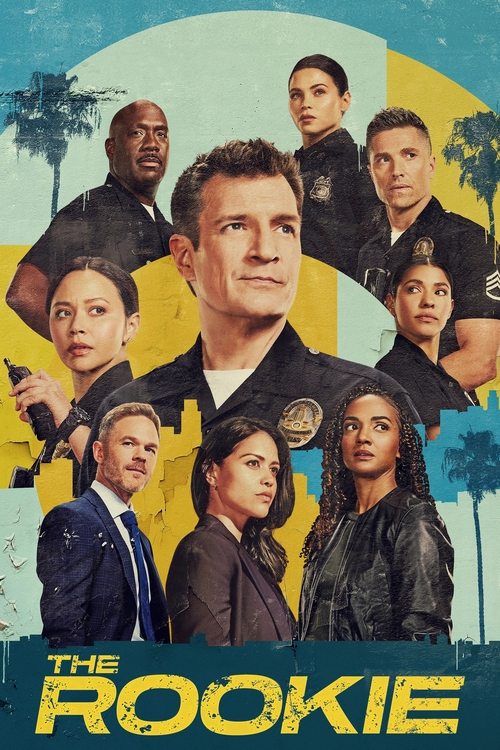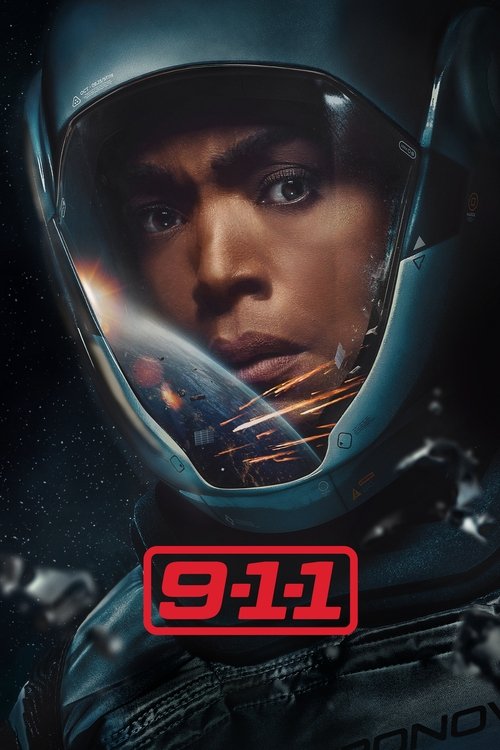
Ask Your Own Question
What is the plot?
In the pilot episode of "Blindspot," a mysterious duffel bag is discovered in Times Square, which contains a woman, later named Jane Doe, covered in intricate tattoos. The FBI is called to the scene, and Agent Kurt Weller, who is immediately drawn to Jane, is tasked with investigating her identity. Jane has no memory of who she is or how she got there, but one tattoo on her back prominently features Weller's name. This revelation sparks intrigue and concern among the FBI team.
As the investigation unfolds, Jane is taken to the FBI headquarters, where she undergoes a series of tests to uncover her identity. The team, including agents Patterson, Rich Dotcom, and Tasha Zapata, begins to analyze the tattoos on her body, which appear to be clues to various crimes. The first tattoo they focus on leads them to a bomb threat at a nearby location. They rush to the scene, where Jane's instincts and combat skills come to the forefront as she helps defuse the situation, showcasing her mysterious abilities.
The team discovers that the tattoo leads them to a man named Oscar, who is connected to a larger conspiracy. As they track him down, Jane experiences flashbacks that hint at her past, revealing that she has been trained in combat and espionage. The emotional turmoil of her lost identity weighs heavily on her, as she grapples with the fear of not knowing who she truly is.
In a tense confrontation, the team locates Oscar, who reveals that Jane's real name is Remi. He claims that she was part of a covert operation and that her memories were erased. This revelation complicates Jane's understanding of herself and her motivations. She is torn between her loyalty to the FBI and the possibility of a darker past.
As the investigation deepens, the team faces various threats, including a shadowy organization that seems to be pulling the strings behind the scenes. Jane's tattoos continue to lead them to dangerous situations, including a hostage crisis and a series of assassinations. Each time, Jane's skills prove invaluable, but the pressure of her unknown past begins to take a toll on her mental state.
In a pivotal moment, Jane confronts Weller about their connection, revealing her feelings of attachment to him despite her lack of memories. Weller, too, feels a strong bond with her, complicating their professional relationship. As they work together, they begin to uncover a larger conspiracy involving government corruption and a secret organization known as Sandstorm.
The season progresses with Jane and the team unraveling more tattoos, each leading to new challenges and revelations. They discover that Jane's tattoos are not just random but are intricately connected to a larger plot that threatens national security. The stakes rise as they face off against powerful adversaries, including a figure known as Shepherd, who is revealed to be a key player in the conspiracy.
As the season reaches its climax, Jane learns more about her past and the choices that led her to become Remi. She grapples with the duality of her identity, torn between her past and her present. The team faces betrayal from within, as they uncover that one of their own has been working against them. This betrayal leads to a dramatic showdown, where Jane must confront her past and make a choice about her future.
In the final episodes of the season, the team races against time to stop a catastrophic event orchestrated by Sandstorm. Jane's loyalty is tested as she must decide whether to embrace her past or forge a new path with Weller and the team. The season ends on a cliffhanger, with Jane's fate uncertain and the threat of Sandstorm looming larger than ever, setting the stage for the next season's conflicts and character developments.
What is the ending?
In the ending of "Blindspot," the team faces a final confrontation with the main antagonist, Madeline Burke. Jane Doe, who has been central to the series, makes a significant sacrifice to save her friends and ultimately confronts her past. The series concludes with a sense of resolution for the characters, particularly Jane and Weller, who find a moment of peace amidst the chaos.
As the final episode unfolds, the tension is palpable. The scene opens in a dimly lit warehouse, where the remnants of the team gather, their faces etched with determination and fear. Jane Doe, played by Jaimie Alexander, stands at the forefront, her eyes reflecting a mix of resolve and vulnerability. She knows that the stakes have never been higher; Madeline Burke, the formidable antagonist, has orchestrated a plan that threatens not only their lives but the safety of countless others.
The camera shifts to Kurt Weller, portrayed by Sullivan Stapleton, who stands beside Jane, his expression a blend of concern and unwavering support. Their bond, forged through trials and tribulations, is evident as they exchange a brief, knowing glance. Weller's internal struggle is palpable; he is torn between his duty to protect Jane and the weight of the mission at hand.
As the team strategizes, the atmosphere is thick with urgency. They discuss the implications of Burke's actions, revealing her intent to unleash chaos through a series of coordinated attacks. The stakes are not just personal; they are global. The team, consisting of familiar faces like Patterson, Rich Dotcom, and Tasha Zapata, prepares for the confrontation, each member grappling with their own fears and motivations.
The scene transitions to the climactic showdown. The team infiltrates Burke's stronghold, a stark contrast to the earlier scenes filled with camaraderie and hope. The tension escalates as they navigate through dark corridors, the sound of their footsteps echoing ominously. Each character's internal conflict is highlighted; Patterson's analytical mind races as she hacks into security systems, while Zapata's fierce determination drives her forward, fueled by a desire for justice.
As they confront Burke, the atmosphere crackles with intensity. Jane steps forward, her past haunting her but her resolve stronger than ever. Burke, played by Michelle Hurd, taunts Jane, revealing the depths of her manipulation and the pain she has caused. The confrontation is not just physical; it is a battle of wills, with Jane fighting not only for her friends but for her own identity.
In a pivotal moment, Jane makes a selfless decision. She sacrifices herself to ensure the safety of her team, a powerful act that underscores her growth throughout the series. Weller's face contorts with anguish as he realizes what she is doing, his heart breaking as he watches her step into danger. The emotional weight of this moment is palpable, capturing the essence of their relationship--one built on trust, love, and sacrifice.
The climax reaches its peak as the team manages to thwart Burke's plans, but not without significant cost. The aftermath is a mix of relief and sorrow. The warehouse, once a battleground, now stands silent, filled with the echoes of their struggle. Each character processes the events differently; Weller is left grappling with the loss of Jane, while Patterson and Zapata reflect on the fragility of their victories.
In the final scenes, the narrative shifts to a quieter moment. Weller stands alone, looking out over the city, the weight of his loss heavy on his shoulders. The camera captures his internal turmoil, a man forever changed by the events that have unfolded. Meanwhile, Patterson and Rich share a moment of camaraderie, their bond strengthened by the trials they have faced together.
The series concludes with a sense of bittersweet resolution. Jane's sacrifice resonates deeply, leaving a lasting impact on her friends and the audience. The final shot lingers on Weller, a man who has lost so much yet remains determined to honor Jane's memory. The screen fades to black, leaving viewers with a poignant reminder of the complexities of love, sacrifice, and the enduring fight against darkness.
Is there a post-credit scene?
In the TV show "Blindspot," there are no post-credit scenes in the traditional sense that you might find in some movies or other series. The episodes typically conclude without additional scenes after the credits roll. Instead, the focus remains on the main narrative and character arcs throughout the episodes. The show is structured to maintain tension and intrigue, often leaving viewers with cliffhangers or unresolved plot points as the credits begin, but there are no additional scenes to follow. Each episode wraps up its storylines within the main content, leading directly into the next episode's events without any extra material after the credits.
What is the significance of Jane Doe's tattoos in Blindspot?
Jane Doe's tattoos serve as a central plot device in Blindspot, each one containing clues that lead to various criminal activities and conspiracies. As the series progresses, the tattoos are revealed to be interconnected, often pointing to larger threats and personal connections to Jane's past. Each tattoo not only drives the narrative forward but also reflects Jane's struggle for identity and her quest to uncover the truth about her life.
How does Jane Doe's relationship with Weller evolve throughout the series?
Jane Doe and Kurt Weller's relationship begins with tension and mistrust, as Weller is initially skeptical of Jane's intentions and her amnesia. However, as they work together to solve cases linked to her tattoos, their bond deepens. Weller becomes a protector and ally for Jane, and their emotional connection grows, leading to moments of vulnerability and intimacy. This evolution is marked by shared experiences, personal sacrifices, and the challenges they face from external threats.
What role does the character of Roman Briggs play in the series?
Roman Briggs, introduced in later seasons, is revealed to be Jane's brother and a significant antagonist. His character adds complexity to the narrative as he embodies the conflict between family loyalty and personal ambition. Roman's motivations are driven by a desire for power and revenge against those he perceives as threats to his and Jane's existence. His presence challenges Jane's understanding of her past and forces her to confront her family's dark legacy.
What are the main conflicts faced by the FBI team in Blindspot?
The FBI team, led by Weller, faces numerous conflicts throughout the series, including internal struggles with trust and loyalty, as well as external threats from various criminal organizations and government conspiracies. Each case linked to Jane's tattoos often reveals deeper layers of corruption and betrayal, testing the team's dynamics. Personal conflicts arise as team members grapple with their own pasts, relationships, and the moral implications of their actions, creating a rich tapestry of interpersonal drama.
How does the character of Patterson contribute to the team's investigations?
Patterson is the team's tech expert and a crucial member of the FBI unit. Her character is portrayed as intelligent, resourceful, and often the source of comic relief amidst the tension. She uses her skills in technology and forensic analysis to decode Jane's tattoos and provide critical insights into the cases they handle. Patterson's contributions are not only technical; she also plays a vital role in supporting her teammates emotionally, often acting as a mediator and a voice of reason.
Is this family friendly?
"Blindspot," produced in 2015, is a crime drama series that contains several elements that may not be considered family-friendly. Here are some potentially objectionable or upsetting aspects:
-
Violence: The show features frequent scenes of gunfights, physical confrontations, and other forms of violence. Characters often find themselves in life-threatening situations, which can be intense and graphic.
-
Mature Themes: The series delves into themes such as betrayal, revenge, and psychological manipulation. These themes can be complex and may be difficult for younger viewers to understand.
-
Language: There is occasional use of strong language throughout the series, which may not be suitable for children.
-
Sexual Content: The show includes scenes that imply sexual situations or relationships, as well as some suggestive dialogue.
-
Emotional Distress: Characters often experience trauma, loss, and emotional turmoil, which can be heavy and distressing for sensitive viewers.
-
Terrorism and Crime: The plot revolves around criminal activities, including terrorism, which may be unsettling for younger audiences.
Overall, "Blindspot" is geared towards a mature audience and may not be appropriate for children or those who are sensitive to violence and intense emotional themes.


























